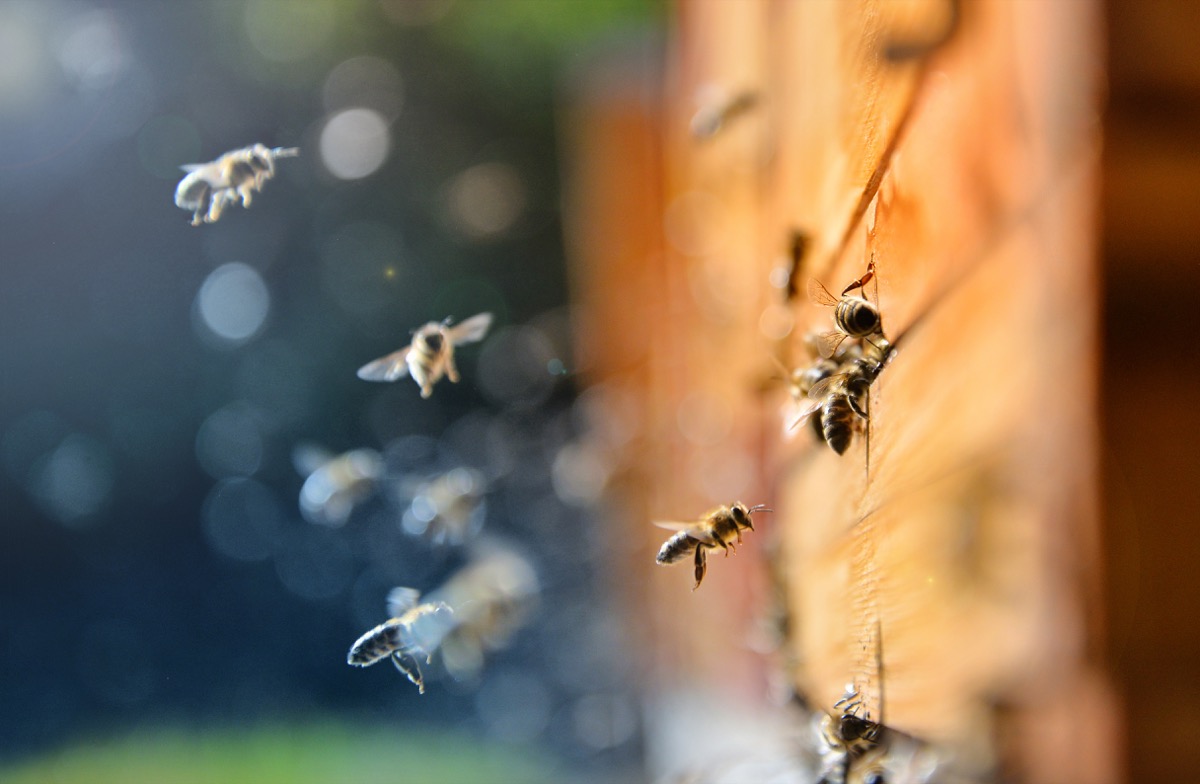This Threatening Insect May Have Just Been "Eradicated" in the U.S.
A murder hornet colony was tracked down by scientists in Washington and has been destroyed.

Normally, stories about animal extinction are bad news. But this week, the news that one species is unlikely to be seen again in U.S. was cause for celebration, as scientists announced that they had successfully destroyed the first Asian giant hornet colony found in the country. If that name doesn't sound familiar, you may know them by their common nickname: "murder hornets." Here's what you need to know about how the threatening insects were eradicated, and for another bug making headlines, check out You Can't Kill This Bug, Even If You Run Over It With Your Car.
Read the original article on Best Life.
Scientists used dental floss to track the murder hornets.

Killing one "murder hornet" at a time would be laborious and futile. So instead, scientists used dental floss to tie tracking devices to three of the insects that they had found in the state of Washington, the Associated Press reports. These devices then led them to the nest, which was located in the city of Blaine, close to the Canadian border.
And they used a vacuum to "eradicate" the 200 murder hornets they found.

Wearing protective suits, and having wrapped the tree housing the nest in cellophane leaving just a single opening, the team vacuumed around 200 insects from the nest into canisters. They're also cutting down the tree as a precaution against any other nests.
In a similar case on Vancouver Island in 2019, authorities used carbon dioxide to eradicate the murder hornets. The scientists in Washington did the same with any they weren't able to vacuum. "At this point, we believe everything in the nest to be dead," Sven Spichiger, managing entomologist for the Washington State Department of Agriculture, said in a press conference Monday, NBC News reports.
What's the deal with murder hornets, anyway?

They are an invasive species of insect with a powerful sting and can spit venom. They're among the world's biggest species of wasp, with queens that can grow to longer than 2 inches. Their stings can puncture through protective clothing, with potentially lethal consequences. They are typically found across Asia from China to Japan, but in 2019 there were sightings of single insects in North America. And for more harmful insects to know about, this is The Most Painful Sting You Can Get From an Insect.
Why are they so dangerous?

While they can cause death, murder hornets are thought to only be responsible for killing around 40 people per year in Asia. Their real danger lies in the way that they target honey bees. Tim Lawrence, PhD, associate professor at Washington State University and a beekeeper for over 50 years, says that 30 to 50 murder hornets can take out 30,000 to 50,0000 bees within a couple of hours. "Then they enter the colony and they consume the baby bees … to feed their young," he says.
Bees in Asia have developed a technique for fighting back, killing hornets by surrounding the invader and vibrating until they generate lethal levels of heat, but North American bees have not yet exhibited this defense mechanism, making murder hornets even more ominous in the U.S.
The threat to honey bees is a serious one, as they play a critical role in the American food industry, pollinating crops and keeping the food chain going. According to Bayer Health, "More than $15 billion worth of crops are pollinated by bees each year. In the United States, honey bees perform most of the insect pollination." Honey bees are already threatened stateside by habitat destruction, pesticides, and diseases. And for more up-to-date news you can use, sign up for our daily newsletter.
Are there more out there?

The entomologists from the Washington State Department of Agriculture say they suspect at least three other nests may be in the area and will keep searching. So far, out of thousands of traps set up across the state of Washington, they have only been found in Whatcom County. However, NBC News notes, "the giant hornet eradiction effort could take years." And for the most threatening insect to people, here's The Deadliest Animal to Humans in the World Will Shock You.





















